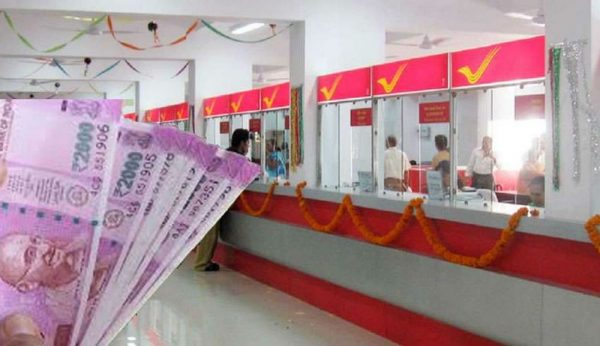Post Office Recurring Deposit (RD) Small Savings Scheme Account: Ever wondered what kind of interest rates does the India Post offer on the government-backed, fixed-income recurring deposit scheme? For the quarter ending June 30, 2024, the post office RD scheme pays interest at the rate of 6.7 per cent per annum (compounded quarterly). The scheme allows monthly investments of Rs 100 and above (in multiples of Rs 10 thereof) with a maturity period of five years with a premature withdrawal option after the first three years. Learn with examples how your monthly investment ranging from Rs 5,000 to Rs 20,000 grows in this small savings scheme.
Post Office RD interest rate Q1 FY25 (April-June 2024): Money invested every month in a Post Office National Savings Recurring Deposit Account (RD), also known as the Five-Year Post Office Recurring Deposit Account, grows at a government-decided rate of interest compounded quarterly. For the quarter ending June 30, 2024, the interest rate applicable to the Post Office Recurring Deposit account stands at 6.7 per cent per annum, according to the India Post website, indiapost.gov.in.
How does the Five-Year Post Office RD investment work?
Here are three important things to know about the Post Office RD scheme, according to the post office website:
Investment limit: One can set up an account at a minimum investment of Rs 100 per month and any amount in multiples of Rs 10 thereof with no upper limit.
How to open account: A post office RD account can be opened against the payment of the initial amount in cash or cheque. Subsequent deposits are required to be made by the 15th day of each month in case the account is opened in the first fortnight or between the 16th day and the last working day of the month if opened in the second.
Maturity period/premature withdrawal: The corpus built in the RD account can be withdrawn prematurely after the completion of three years from the date of opening by submitting a prescribed application form at the concerned post office branch. However, in case the depositor exercises the premature withdrawal option, the interest rate applicable to the Post Office Savings Account applies to the corpus. The RD can be continued for another five years upon maturity.
Read More: ADB Raises India’s GDP Growth Forecast For FY25 To 7% On Robust Investment, Consumer Demand
Five-Year Post Office RD Account: Investment examples
Now, given the prevalent rate of interest, the following examples illustrate how the money invested in the RD scheme grows upon maturity:
| Period | Corpus at the end of each year till maturity | ||
| Rs 5,000/month investment | Rs 12,000/month investment | Rs 20,000/month investment | |
| End of third year (premature) | Rs 67,492 | Rs 1,61,980 | Rs 2,69,967 |
| End of fourth year (premature) | Rs 70,192 | Rs 1,68,460 | Rs 2,80,766 |
| End of fifth year (maturity) | Rs 3,56,829 | Rs 8,56,390 | Rs 14,27,317 |
Please note that the above calculations are based on the prevalent interest rates and compounding frequencies.
Read More: NPS vs PPF: Which retirement plan should you choose?
Meanwhile, here’s a list of the top five interest-paying small savings schemes, as of the April-June 2024 quarter, according to the India Post portal:
| Small savings scheme | Interest rate (%) |
| Sukanya Samriddhi Account Scheme | 8.2 |
| Senior Citizen Savings Scheme | 8.2 (quarterly interest Rs 205 for Rs 10,000) |
| National Savings Certificate (VIII Issue) | 7.7 (maturity value Rs 14,490 for Rs 10,000) |
| Kisan Vikas Patra | 7.5 (matures in 115 months) |
| Mahila Samman Savings Certificate | 7.5 (maturity value Rs 11,602 for Rs 10,000) |
| Monthly Income Account | 7.4 (monthly interest Rs 62 for Rs 10,000) |
| 5 Year Time Deposit | 7.5 (annual interest Rs 771 for Rs 10,000) |





































